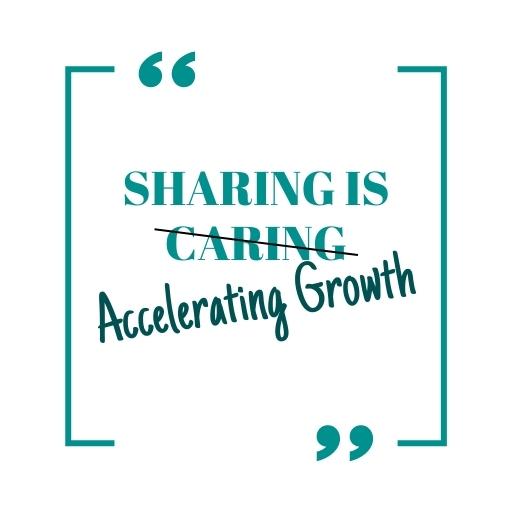M is for Metrics: sharing Metrics to accelerate growth

Although much of the sales process is about fostering relationships and building your Champion within the business, Metrics (or numbers) form the foundation of every sale.
Metrics/numbers/statistics provide highly persuasive arguments for humans to act. They are critically important when justifying creating a business case.
So, we need to collect Metrics, and we need to collect a lot of them.
It’s easy to think that when talking about Metrics, we are just interested in qualifying and quantifying the pain the customer is facing while demonstrating how our solution helps. These Metrics are critical and will form an integral part of the business case compiled for every procurement, but how do you know which company to target in the first place?
If the product or service you sell is best suited to a company with over a thousand employees, it doesn’t make much sense to spend time and resources targeting a company with a few hundred on the payroll. This is only obvious to all if this metric has been logged in some collaboration tool the lead generation team knows about and can access.
Many other Metrics should feature in any sales collaboration, and they will differ for each company, but collaborating to mature these Metrics is vital.
Top-performing organisations understand the importance of:
- Knowing these numbers.
- Understanding what good looks like.
- Collating the numbers.
- Sharing the numbers.
- Ensuring the whole go-to-market has access to these Metrics.
Sharing is caring accelerating growth

Metrics are essential at nearly every stage of the sales process, albeit for different reasons and different audiences, so this information needs to be accessible to everyone, always.
If go-to-market teams keep information siloed within their various teams, they are missing out on vital information from each other. The impacts can vary from team to team:
- Marketing may miss Metrics that entice customers to become MQLs.
- BDRs may miss Metrics to persuade a customer of the need for a meeting.
- Sales may miss critical Metrics and use cases to justify an ROI.
The Metrics document should be accessible to everyone within any go-to-market organisation, like marketing, business development, sales, presales, services, customer success and so on.
So, here are a few tips on how to get started:
- Create a collaboration space (for example, document, chat, or portal).
- Make sure everyone knows about the collaboration space.
- Make sure the space is easily accessed and regularly reviewed.
- Make sure the space is kept updated and relevant as your business grows.
- Ensure your team is “audible ready” and can share the Metrics and the backstory with customers.
Now, although every scenario is different, every deal follows a similar pattern. By having a series of Metrics informing you about which type of company your solution is best suited to, you’ll solve many similar problems in different organisations.
- Every time you identify a pain within a target organisation, capture the metric associated with it and log it.
- Every time you demonstrate the efficacy of your solution in a business case, measure it and log it.
- Every time you identify how your solution beats a competitor, measure your positive impact and log it.
- Every time you deliver a solution for a customer, measure the outcome and log it.
Accelerate onboarding with Metrics
Numbers tell stories that can accelerate onboarding for sales and ramp up your recruits faster. Using those Metrics collected, a story can be told, which sales teams can learn to quickly establish credibility for new team members with customers.
Faster credibility will ultimately increase the productivity of your sales team members, accelerating them to the milestone of closing deals.
It’s about credibility for new recruits and about having team members working on the right deals from the get-go.
Metrics are the bread and butter of pipeline qualification; they’re how you identify whether a deal is worth pursuing in the first place, how you quantify the identified pain (and importance to the customer), how customers justify the investment, and more.
Metrics are imperative for all departments
Many departments rely on Metrics. It’s not just about sales:
- Marketing creates more persuasive case studies using Metrics.
- Pre-sales use Metrics to qualify the most important use cases.
- Customer Success measures adoption and business case delivery using Metrics.
Those departments will also have valuable metrics to share with sales.
Again, collaboration is needed across all departments. By creating time and space for collaboration, you will accelerate the onboarding of every subsequent hire and quickly grow your team and productivity.
So, take some time to consider: how are you collecting and collaborating on the Metrics that will establish your credibility and deliver faster growth?
Are you already an inspir’em member? You can log in today to take advantage of your digital learning resources and pose questions to our coaches in our growing online community.
Not an inspir’em member? You can look at what inspir’em membership can do to accelerate your sales process.



